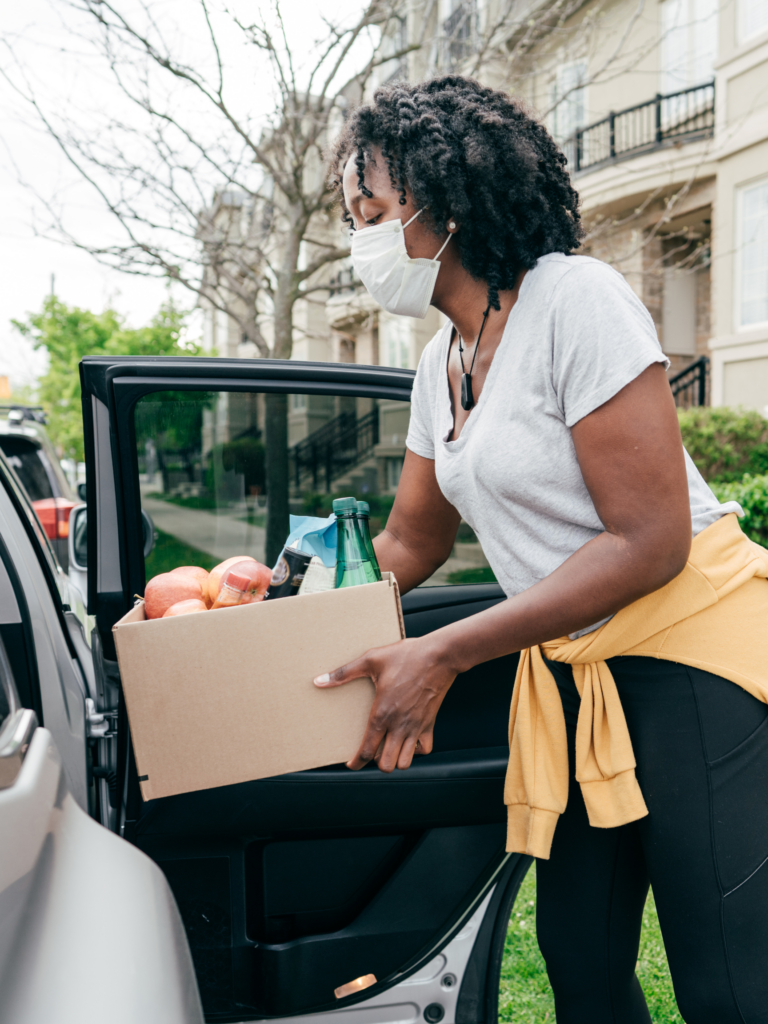The Gap: Food Security and Nutrition Security
At Food Equality Initiative, our mission is to fight for nutrition security and health equity for all. Food insecurity affects 42 million Americans right now. But, what about nutrition insecurity? What is the difference between food security and nutrition security? What exactly is FEI fighting for?
Let’s take a look at what you need to know in the fields of food security and nutrition security, types of assistance programs, and ways you can help.
What is the difference between Food Security and Nutrition Security?
Food security: all people at all times have both physical and economic access to sufficient food that meet dietary needs and do not live in hunger.
Nutrition security: having consistent access to safe, affordable, and healthy foods with nutrients essential to optimal health and well-being.
Although food security is a necessity, nutrition security builds on food security to further ensure access to foods that are not just calories but nutritional calories, to support health and manage or prevent diseases.
An example of food security would be if a person was given a package of microwaveable noodles and a can of soda for a meal. Yes, it is technically food. However, there are few elements in that meal to provide the body with sufficient energy and nutrients it needs to sustain healthy functions. Nutrition security is access to a balanced meal full of micro/macro nutrients that sustain and provide nutritional value to the body.
Who is Affected?
Food security and nutrition security can be influenced by a range of factors such as: income, employment, race/ethnicity, location, and disability or disease. The Pandemic has made it more difficult than ever for families and people to afford and have secure access to nutrition. According to Feeding America, more than 35 million people in the United States, including 11 million children, were food insecure before the Pandemic in 2019. That number has grown to an estimated 42 million people suffering from food insecurity in 2022.
According to the USDA, single mothers below the poverty line are at the highest risk of nutrition insecurity. Furthermore, 35% of households with incomes below the poverty line were considered to be food-insecure.
History of Food Insecurity in Food Assistance
With food insecurity rates steadily increasing, food assistance between a variety of private and public programs have also increased in demand. The first federally organized food programs in the United States date back to the Great Depression and have provided help for countless families and individuals in need. Basic programs and assistance include soup kitchens, food pantries, and governmental assistance programs like SNAP (Supplemental Nutrition Assistance Program) and WIC (Supplemental Nutrition Program for Women, Infants, and Children).
Private food programs:
–Soup kitchens became widely known during the late 1920s, offering a hot meal, usually soup and bread, to hungry individuals. Mainly run by churches, private charities, and volunteers, soup kitchens were extremely crucial during the Great Depression, because these meals were cheap and could feed many people. This is an example of ensuring food security but not necessarily nutritional security.
–Food pantries provide non-perishable and canned goods from food banks for people to make meals with at home. Pantries can be located in a specific area, such as a school or church, or operate as a mobile pantry to meet those in need where they are. There are many different models for food pantries, some passing out pre-grouped food items while others offer more choice. (Food Equality Initiative started as a specialty food pantry, focusing on providing items that were free-from the top 9 allergens to families in need diagnosed with food allergies and/or celiac disease.)
–Food banks were first established in the U.S. in 1967 but were not widely used until the 1980s. Food banks locate low-cost food to distribute to agencies and organizations listed above. Think – food banks are the “warehouse/suppliers,” food pantries are the individual “grocery stores.”
All three of these private programs are largely focused on relieving food insecurity. While they may assist with lowering hunger in the short-term, they are not necessarily building education around the importance of nutrition and supplying nutrient-dense food to the population they serve.
Government Assistance Programs:
–Supplement Nutrition Assistance Program (SNAP) allots a monthly dollar amount to eligible individuals on an Electronic Benefits Transfer (EBT) card based on your monthly income. The EBT card is accepted in most grocery stores and farmer’s markets. (Some farmer’s markets even double your allotted money on fresh produce.) To be eligible for SNAP, you must apply and meet your state’s specific income requirement.
–Special Supplemental Nutrition Program for Women, Infants, and Children (WIC) is exclusively available to women who are pregnant, breastfeeding, postpartum, or have children 5-years-old or younger. Unlike SNAP, WIC does not provide a general allowance. Instead, the USDA says “WIC participants receive benefits to purchase items from a food package tailored to their specific nutritional needs.” Additionally, the program provides nutrition education, breastfeeding support, and referrals to other health/social services based on your current situation.
Along with SNAP and WIC, food services within the Child Nutrition Programs are available. The National School Lunch Program (NSLP) provides low-cost or free meals to school children. NSLP has similar programs including the Summer Food Service Program and Child and Adult Care Food Program, providing children with nutritious food while school is in session and during the summer months. Similarly, the School Breakfast Program allows for schools to provide breakfast in schools and residential childcare institutions.
Barriers to Accessing Nutritious Food
Although soup kitchens and food pantries are fairly accessible, nutrition security is not always fulfilled with the food provided. Adding in any type of dietary-restriction only makes it harder to meet nutritional goals. Unfortunately there are a lot of barriers to accessing safe, nutritious foods:
Food Deserts & Food Swamps: A food desert means that there are not enough grocery stores with nutritious, fresh food options within a certain distance, whether it be rural or urban. Food swamps mean that non-nutritious options, like fast-food restaurants, outnumber the healthy options. A new term being used to describe this situation is food apartheid, meaning that it was calculated and a product of a racially-biased system instead of a natural occurrence.
Expense of Special Dietary Foods: The price of fresh and nutritional foods are often higher in price and therefore out of budget for many people on a limited income. Additionally, those with dietary conditions like celiac disease or food allergies require free-from (ex: gluten-free) products that are significantly more costly. These items are often not available at food pantries, soup kitchens, or even in federal assistance programs.
Resources & Time: Education resources on nutrition are difficult to come by, especially in underfunded and low-income areas. Many food and nutrition insecure individuals may also lack transportation resources to help transport foods, resulting in settling for only what can be carried. Additionally, many people work late hours or overtime, leading to quick and non-nutritious meals like fast-food or convenient boxed or frozen meals, which are heavily processed.
How Can I Help?
Food security and nutrition security are harder to achieve and are more pervasive than you may think. Education, access, and advocacy are the three major components that need to be addressed to fight this issue. Education of general nutrition and how to make healthy food choices. Access to multiple nutritious food options, physically and financially. Advocacy to fight for more regulation for food manufacturers to ensure our food is clean and nutritious. By supporting organizations like FEI, where our 3 pillars are Access, Education, and Advocacy, you are helping fight for food security and nutrition security across the United States.
For National Food is Medicine Day, September 14th, consider donating financially or volunteering time at a local food pantry.



